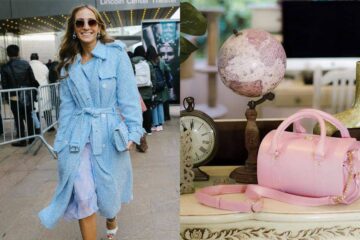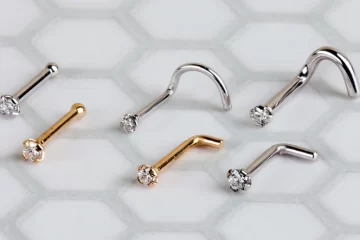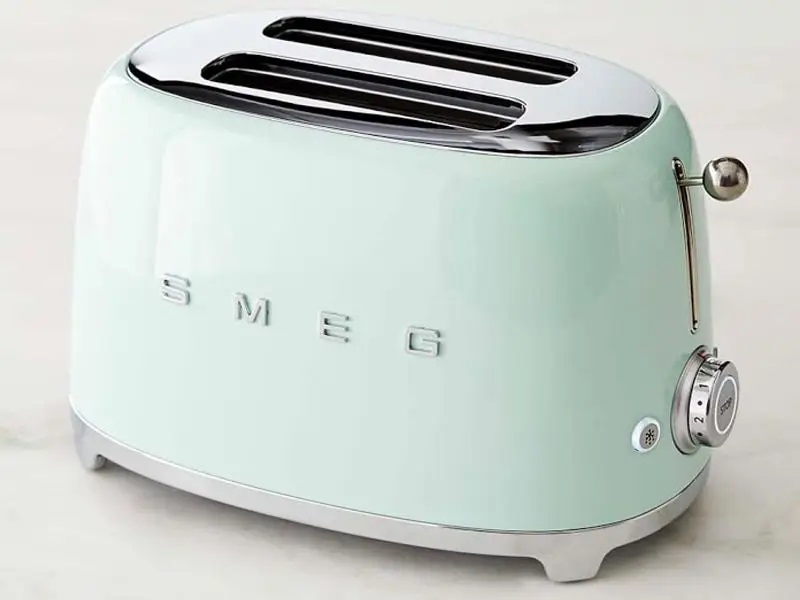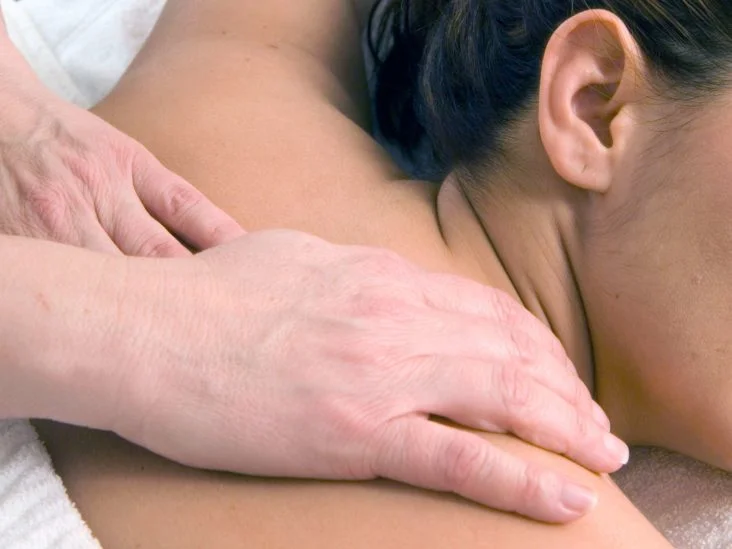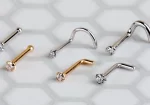Reasons to Choose Anti-Highlights as This Fall’s Color Trend

The fall season is always a great time to try out new styles and color trends. It seems like every year color starts trending in one direction or another; however, when you think about what colors really make a statement and stand out from the rest, there is no better way than with hair highlights.
Hair highlights in particular hold a special place in our hearts because they allow us women (and men) an opportunity for change without sacrificing our time or money by requiring multiple appointments at the salon. With that said, anti-highlights have emerged as this season’s popular choice of hair color trend—so let’s discuss why!
What are Anti-Highlights?
Formally known as “invisible highlights,” anti-highlights are a subtle way to lighten your hair color. This technique is perfect for those who love their natural hair color but are naturally dark-haired and want to lighten up without the commitment of bleach.
Anti-highlights use a dye similar to hair color; it is placed directly on top of your regrowth and roots to lighten them without changing the rest of your hair. By placing a lighter color on top of your existing regrowth color, it helps lighten that darker color.
Furthermore, the placement of anti-highlights can be strategically placed to ensure that you get a full spectrum of light and dark shades throughout your hair—the technique also helps prevent the “block color” effect, where your hair color looks one dimensional from a distance.
If done correctly, you won’t need to recolor your hair as frequently as with other highlighting techniques because the colors will blend seamlessly. However, if you want to change up your look or apply anti-highlights in a new way, they can easily be removed by washing and rinsing your hair thoroughly.
Anti-highlights are a trend in hair color that can be used to cover up and hide regrowth and roots. This is perfect for those who want to maintain their current look without the need of getting regular touch-ups at the salon. It’s also ideal for those who don’t have time or money for regular haircuts, as it is an inexpensive alternative.
Highlights vs Anti-highlights: What’s the difference?
Anti-highlights are not as common as traditional highlights, but they aren’t particularly new either. During the early 2000’s many celebrities, including Nicole Richie and Eva Longoria, were known for having anti-highlights in their hair colors. Although it has been a while since we’ve seen them in the mainstream, they are still a great way to color hair and add dimension.
Anti-highlights are when sections of hair are lightened in order to provide contrast against darker strands around them, much like traditional highlights. The main difference is that rather than using foils during application in order to separate sections that will later be colored with dye, anti-highlighted sections remain their natural color while surrounding strands are lightened instead. This allows for more control over which sections will be lighter or darker than others.
When applied properly, anti-highlights give off a very subtle increase in dimension and provide softer contrast between shades than traditional highlights can. They can be either streaky or solid blocks of color depending on the desired look and the size of the sections used.
Can you get both at the same time?
“No.” “Yes.” “It depends.” The answer to this question is not as simple as you might think. Highlights are designed to stand out, so they’re often applied with a lighter color. Anti-highlights are typically darker in color and work well with the natural hue of your hair. So, if you want highlights that contrast with your hair’s natural tone, then yes, but it all comes down to what look you’re going for!
There are two different ways to get highlights and anti-highlights at the same time. One way is by using a highlighting pen on top of the existing color with no bleach in it. The other way is by applying bleach to your hair first before applying any dye or highlight colors.
If your natural hair color is a lighter tone, you will have to use highlights in order to get your anti-highlight color. For example, if you have dark brown hair and want to get an auburn highlight color, you will need to use a medium ash brown or a light blonde shade as a highlight color. The lighter color will be considered a highlight because it is light and the dark ash brown or dark blonde will become your anti-highlight as they are slightly darker than your original hair color.
If you want to make sure that you do not have any highlights, then choose a medium-toned hair color that is one shade lighter or darker than your original hair color. For example, if you have mid-brown hair and want to get a chocolate brown shade, use a medium ash brown or dark blonde shade as the color and it should not give you any sort of highlight at all.
The answer to this question depends on your natural hair color tone. Highlights and anti-highlights can never be present at the same time because they cancel each other out. Highlights and anti-highlights both absorb some of the light that attempts to alter their respective colors which means highlights will never lift enough to become anti-highlights. But they can be present in different parts of the hair.
Reasons to choose anti-highlights
The idea of choosing to have an anti-highlight is not new. It’s been done for years, but it has recently become more popular with celebrities and influencers who are looking for a way to stay true to themselves without being “too much.” There are many reasons why people choose this method, some of which include the following:
They are low-maintenance
Anti-highlights require less maintenance than highlights. You can wait 4-6 weeks for them to grow out and they still look good. In addition, they blend in with your natural hair color making it look like your hair was born with the shade.
You can choose anti-highlights from a wide range of colors
When you go to most hair salons, you are limited to highlights that are tied into the colors already in your hair. With anti-highlights, you can choose from a wider range of colors because it doesn’t matter what color your natural hair is underneath. This gives more options for those looking to express themselves through their hair with vibrant colors.
Anti-highlights give an illusion of thickness
Anti-highlights, unlike highlights, stick to the lower layers of the hair. This changes the appearance of the ends and gives them an illusion of thickness. The ends of your hair are the first to look thinner as they start to split and fray, so instead of covering them up, anti-highlights draw attention to relevant strands. If you’ve been looking for a way to fix that problem, then you might want to go with anti-highlights.
A great option if you’re looking for something temporary
Anti-highlights are also easy to grow out. If you want to make the color blend in more easily, then you can opt for a darker shade that matches your natural hair color. You can go from one hair color to another in just a few hours, so you have the chance to switch it up as often as you’d like. Best of all, unlike some other types of highlights, these ones aren’t as damaging.
They are a fun way to add some dimension and depth to your hair
They are an easy way to add depth and texture, so you can get a bohemian kind of style. This is especially great if you want to change up your look without switching to a whole new color or chopping off too much length. These highlights are usually applied at the mid-lengths and ends, which can make your hair appear thicker, especially if you have naturally thin hair.
Examples of anti-highlights doing magic to your hair
The color of your hair is an important part of your personal identity. There are many different shades and colors that can be chosen for a person’s locks, but there are also certain shades that should be avoided at all costs. This is something important to consider, as according to the AllThingsHair survey, 27% of women get their hair colored every month! The following list will provide you with some examples of anti-highlights for different hair colors in order to help you choose the best one for yourself.
Anti-highlights for brown hair
The most popular hair color is brown, which can come in various shades with different degrees of darkness. Luckily, there are anti-highlights that will keep your overall look balanced and provide you with the overall effect that you’re looking for.
Here are some examples of blonde hair anti-highlights:
- Red-brown hair anti-highlights. This is a great option if your normal hair color is dark brown or medium brown, and you’re looking for a way to incorporate red into your look. Red, which comes from the pigment in your blood, doesn’t fade as quickly as other colors.
- Golden blonde hair anti-highlights. This is a great option if your normal hair color is dark brown or medium brown, and you’re looking for a way to incorporate gold into your look. Golden blonde adds some pop and ensures that the reds and golds in your hair really shine through.
- Platinum blonde hair anti-highlights. Platinum blonde is a brighter type of anti-highlight for brown hair. It goes great with darker shades, especially if the contrast is very subtle. On lighter shades of brown or black, it can stand out too much. When styling this shade, less is more! Try not to overdo the styling products, or you may look like you’ve just walked out of an 80s music video.
Anti-highlights for blonde hair
A common issue that many blonde-haired women face is unwanted orange, brassy tones. Anti-highlights are designed to combat this problem by using a darker color to counteract the lighter color in your hair. This will create more depth and dimension for your look while also helping you avoid the dreaded “brassy” tone. If you want to learn how anti-highlights can help give you great-looking hair, continue reading!
Here are some examples of blonde hair anti-highlights:
- Purple anti-highlights. If your hair tends to dull down as you get older, purple is an excellent choice for anti-highlights. If you already have some sort of unnatural color in your hair (for example, if you’re naturally a brunette but dye the ends of your hair pink), purple anti-highlights will help to even out the tone.
- Pink anti-highlights. Are you a true blonde who wants your hair to be brighter, but not flat white? Then try using pink as an anti-highlight! A great choice for those of us whose skin runs on the paler side, this can make your hair look bright and healthy.
- Red anti-highlights. If you’re naturally a blonde, red can give you brunette vibes. If you dye your hair brown but are trying to go lighter without damaging it too much, remember that if you’re looking for less of a commitment, red is also a great choice!
Anti-highlights for red hair
Red hair is a blessing and a curse. It’s beautiful, but it doesn’t like to cooperate with all the other colors in your wardrobe. That’s why we’ve put together these anti-highlights for redheads that will help you achieve the perfect look every time!
Here are some examples of red hair anti-highlights:
- Auburn anti-highlights. Red with a copper tint works great for anti-highlights on redheads, especially if you want a more subtle look.
- Chestnut brown anti-highlights. Redheads with darker hair colors will appreciate chestnut brown as a muted color choice. While it’s not the most common anti-highlight shade, redheads who have intense undertones with dark hair can use this to bring down the brightness of their natural hair color.
- Coffee brown anti-highlights. Some redheads with light hair colors may find coffee brown to be the perfect shade to tone down the brightness of their locks. The darker shade can create balance, not only for your undertones but also for any brassiness that you’re struggling to deal with.
- Chocolate brown anti-highlights. This is ideal for redheads with light hair colors who have exceptionally warm undertones. While some more subtle hues may fall flat, chocolate tones will easily match your natural locks without creating a huge contrast. This shade can also help to recreate the depth of color that you would get from a fresh blooded color.
- Light brunette anti-highlights. Trying to tone down some of that red? You might like light brunette as an anti-highlight color choice. This shade will help mellow out those tones compared to blonde or chestnut brown, which are often used for this purpose.
Conclusion
People are looking for a more natural look as the weather cools off. They want to avoid harsh, direct sunlight and it’s easier to maintain an anti-highlighted hair color if they don’t have much time in their schedule. Anti-highlights offer less contrast than traditional highlights, which is why people like them so much this fall season. People who enjoy changing up their hairstyle often will find that there are endless options with these new colors!

